Why I Picked It Up: This one was in one of our weekly library hauls that are compiled by a whirlwind toddler, a selective kindergartner, and an educator mom. I honestly don’t know who gets credit for Marta! Big & Small, but I’m glad it made its way home with us!
Why I Finished It: This is such a cool little, bilingual book with so many different levels!
On the surface, Marta! Big & Small is a simple book about opposites – big/small, fast/slow, etc. as illustrated by various animals. However, there’s also a Spanish component that introduces students to simple Spanish words. And on the highest level, there’s Marta, “an ordinary girl” who helps bring a different perspective to these common word pairs.
The text is simple enough for a straightforward read-aloud, but there is also a story being told through the pictures about Marta’s journey through the jungle, where she encounters all these animals. The story comes to a climax when she has to outsmart a snake that thinks she is sabrosa!
Who I Would Give It To: With so many different ways to use this book, Marta! Big & Small is one that all PreK and Kinder teachers will want to have in their libraries, but it is also one that upper elementary teachers can use to help students with adjectives!
Integration Ideas
Vocabulary Context Clues
Each page is set up to provide plenty of context clues to help even the youngest students decode the Spanish word, both into English and then the meaning. If your students are reading, cover the second sentence with a post-it note and read the first sentence aloud. Let them study the picture and talk to a partner to see if they can figure out what lenta means. Have students discuss what they notice about the horse, what they notice about Marta, and then the relationship between the two.
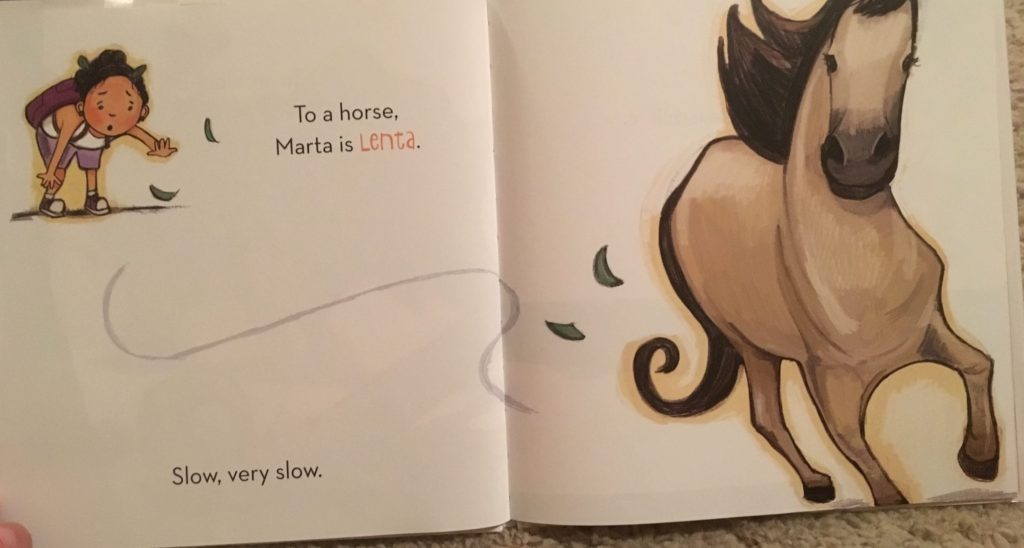
Description – Adjectives and Opposites
Start by displaying a picture of an animal – let’s take the horse. The book says “To a horse, Marta is lenta. Slow, very slow.” What does that tell you about the horse? What else do we know about horses? They might start with physical characteristics – a horse is big, a horse is brown, has two eyes, four legs, etc. Then prompt students to think about how a horse moves. It can move fast, slow, with a rider, without a rider. As a group, have students brainstorm a list of other adjectives for a horse.
Students in 3rd grade and up can choose one of the listed adjectives and determine the opposite of that adjective. This is a great opportunity to break out the thesaurus, either print or digital (learning to use both formats is important!). Then, they can write their own page using the same structure and choose their own second language. If Jessica decides the horse is graceful, she might pick “clumsy” as the opposite. Since Indonesian is a second language for her, her sentence might look like this: “To a horse, Jessica is ceroboh. Clumsy, very clumsy.” If students don’t have a second language, Google Translate is an excellent tool!
For 2nd grade and lower, students can brainstorm the list, use the thesaurus, and as a class, create a list of opposites.
Different Perspectives
Marta! Big & Small forces the reader to think from someone else’s point of view. So often we see people a certain way based on our experiences and frame of reference, but someone else could see that person completely differently because they come with a completely different set of background experiences. Same person, different interpretation. That is how the book is presented. It doesn’t tell you that Marta is fast or slow. It shows you that, when Marta is racing a horse, she’s slow. But when she’s racing a turtle, she’s clearly faster! It all depends on your perspective! Are you the turtle or the horse? The answer to that will determine how you describe Marta.
Use this idea to help students make greater connections with other content areas or stories through the discussion of an essential question:
How can looking at different perspectives help us better understand ourselves?
First, give students time to make personal connections and discuss the question within the context of Marta! Big & Small, but then, help students start to branch out to look at different areas of social studies, particularly the major conflicts between various countries or groups of people, or other stories they’ve read.
Comparatives
At the back of the book, you’ll find a list of the different animals featured in the book. We can take this idea of perspectives and combine it with comparative adjectives. Choose one of the adjectives – we could take big – and one of the animals – let’s take the rabbit. Then sort the animals. Which of the animals is bigger than the rabbit? How would we describe the rest of the animals? (smaller). We could even arrange the bigger animals in order of big, bigger, biggest.
Working in pairs, students could turn practice sorting animals and matching the appropriate adjectives into a game with a tool like Popplet or on an interactive whiteboard. Either take pictures of each animal from the book, or have students find pictures of six or seven different animals (or objects around the room, or book characters, or students…you could use any collection of things!), and then type out the words big, bigger, biggest and small, smaller, smallest. One student chooses an animal and a word, and the other student must create the progression. If both students agree that progression is correct, the next student chooses an animal and a word, and the game continues.

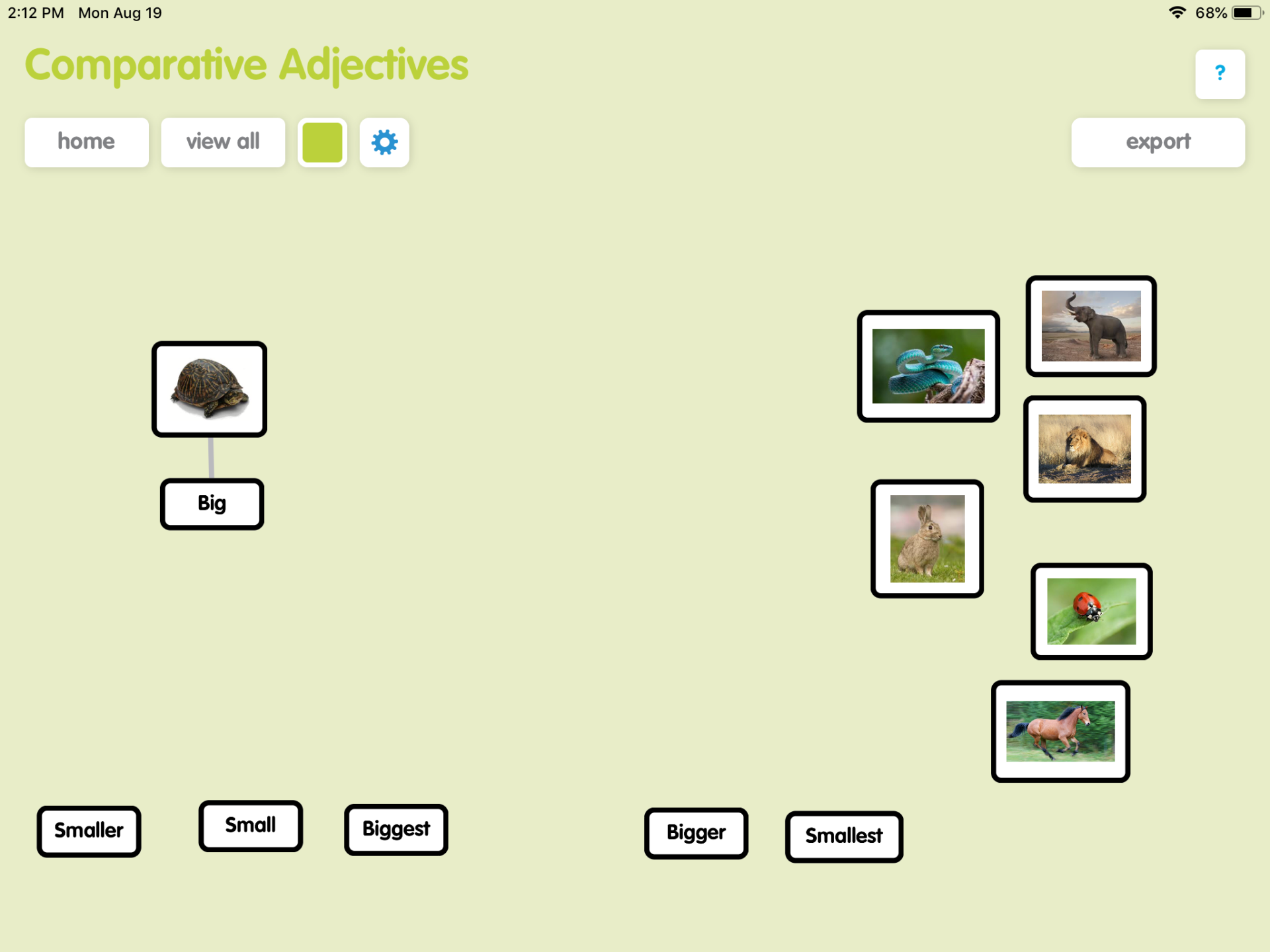
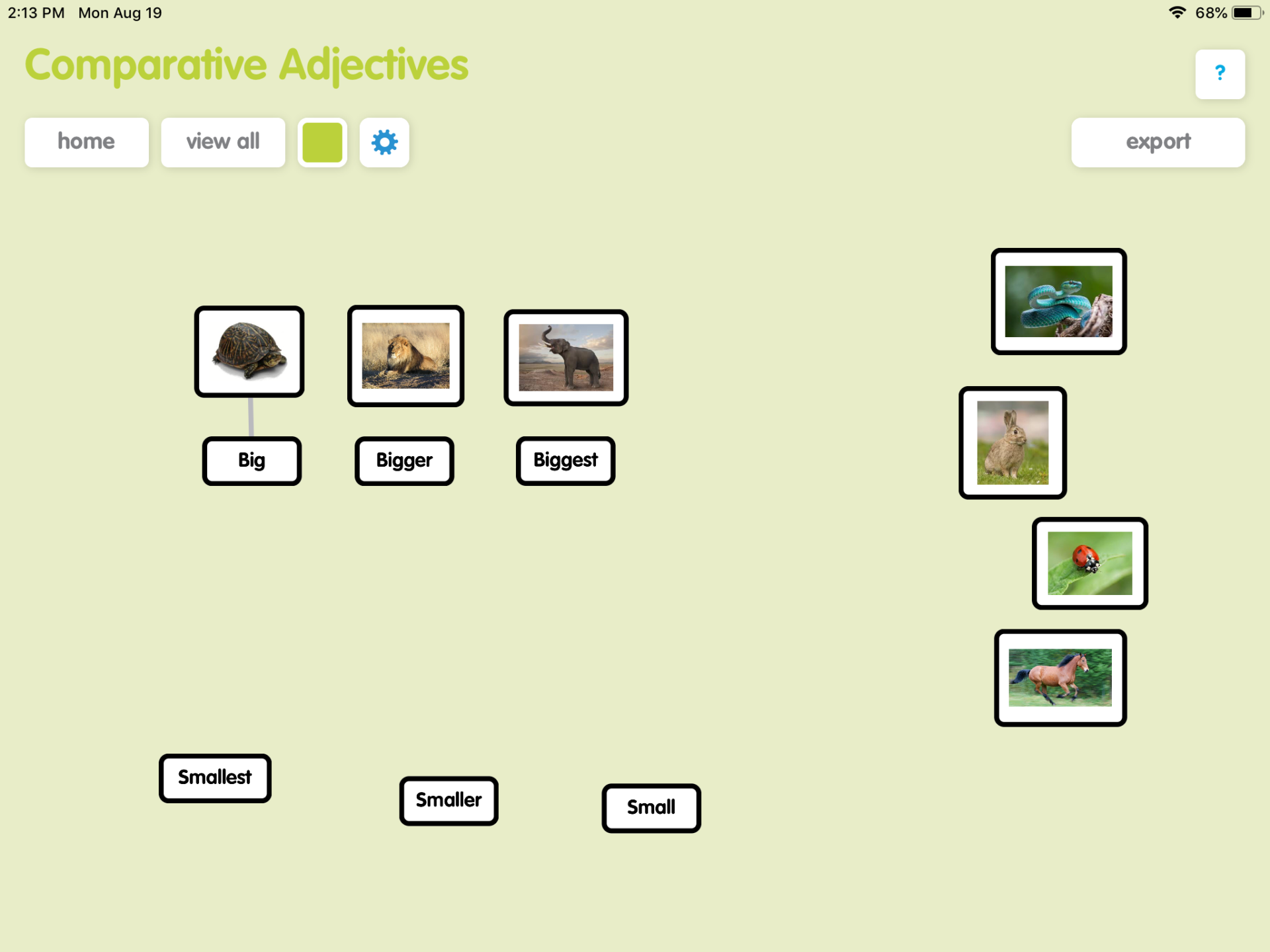
Add another layer and have students also apply the small, smaller, smallest labels to the same set of animals. While we might not think of an elephant as small, if we are to accurately apply the three words, the elephant would have to be small if the turtle is going to be the smallest. Just a different way to look at things!
What are your plans for this picture book?

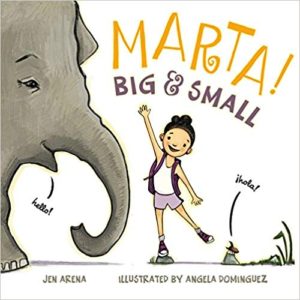
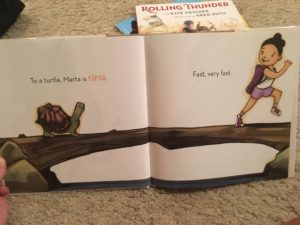
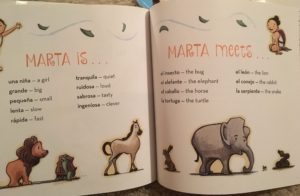






Leave a Reply